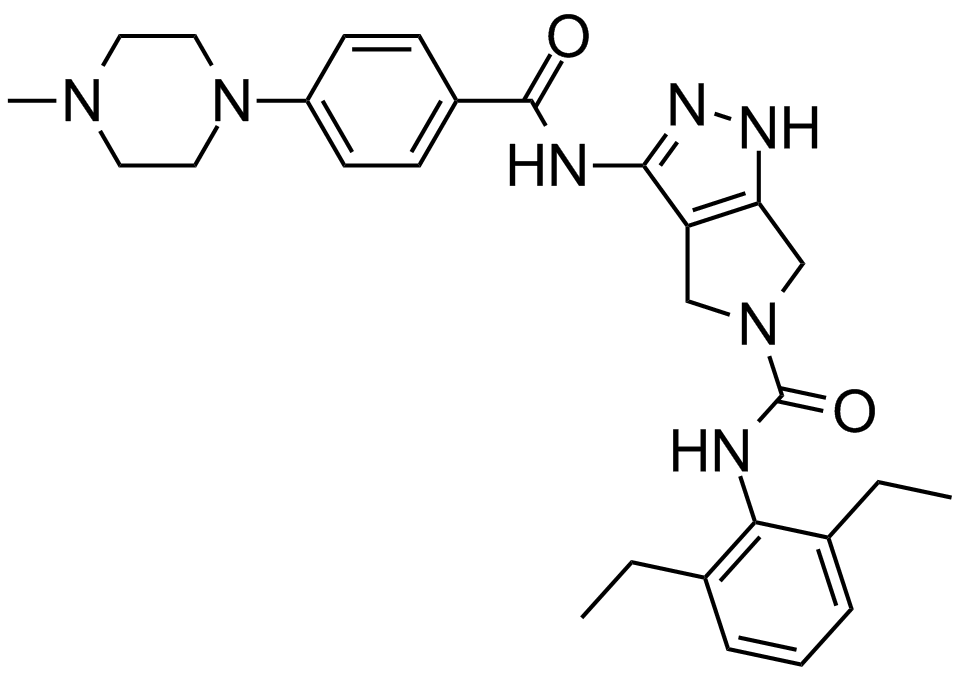PHA-680632 (Synonyms: Pha 680632) |
| Catalog No.GC10479 |
An Aurora kinase inhibitor
Products are for research use only. Not for human use. We do not sell to patients.

Cas No.: 398493-79-3
Sample solution is provided at 25 µL, 10mM.
PHA-680632 is a novel and potent inhibitor of Aurora kinases, a small family of serine/threonine kinases regulating mitosis in chromosome segregation and cell division, that inhibits the activity of all three Aurora kinases with 50% inhibition concentration IC50 values of 27 nM, 135 nM and 120 nM for Aurora A, B and C kinases respectively. PHA-680632 also cross-reacts with other kinases, including FGFR1, FLT3, LCK, PLK1, STLK2, VEGFR2 and VEGFR3, to a lesser extent and exhibits much higher IC50 values (390 to 5500 nM) compared to Aurora kinases. Moreover, PHA-680632 potently inhibits proliferation in a wide range of cancer cell types, including HCT116, A2780, HL60 and Hela cells, with IC50 values ranging from 0.06 to 7.15 μM.
Reference
[1].Soncini C, Carpinelli P, Gianellini L, Fancelli D, Vianello P, Rusconi L, Storici P, Zugnoni P, Pesenti E, Croci V, Ceruti R, Giorgini ML, Cappella P, Ballinari D, Sola F, Varasi M, Bravo R, Moll J. PHA-680632, a novel Aurora kinase inhibitor with potent antitumoral activity. Clin Cancer Res. 2006 Jul 1;12(13):4080-9.
Average Rating: 5 (Based on Reviews and 30 reference(s) in Google Scholar.)
GLPBIO products are for RESEARCH USE ONLY. Please make sure your review or question is research based.
Required fields are marked with *




















